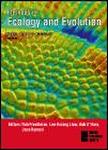版权所有:内蒙古大学图书馆 技术提供:维普资讯• 智图
内蒙古自治区呼和浩特市赛罕区大学西街235号 邮编: 010021

作者机构:Univ St Andrews Ctr Res Ecol & Environm Modelling St Andrews Fife Scotland Biomath & Stat Scotland Aberdeen Scotland British Trust Ornithol Thetford Norfolk England Scottish Nat Heritage Great Glen HouseLeachkin Rd Inverness Scotland
出 版 物:《METHODS IN ECOLOGY AND EVOLUTION》 (Methods Ecol. Evol.)
年 卷 期:2017年第8卷第12期
页 面:1690-1702页
核心收录:
学科分类:0710[理学-生物学] 07[理学] 09[农学] 0713[理学-生态学]
基 金:Scottish Government's Centre of Expertise ClimateXChange British Trust for Ornithology (BTO) BTO Joint Nature Conservation Committee Royal Society for the Protection of Birds
主 题:climate change decomposition of spatial temporal and anomaly effects generalized additive models generalized linear models spatio-temporal modelling species abundance UKCP09 climate projections
摘 要:1. Modelling spatio-temporal changes in species abundance and attributing those changes to potential drivers such as climate, is an important but difficult problem. The standard approach for incorporating climatic variables into such models is to include each weather variable as a single covariate, whose effect is expressed through a low-order polynomial or smoother in an additive model. This, however, confounds the spatial and temporal effects of the covariates. 2. We developed a novel approach to distinguish between three types of change in any particular weather covariate. We decomposed the weather covariate into three new covariates by separating out temporal variation in weather (averaging over space), spatial variation in weather (averaging over years) and a space-time anomaly term (residual variation). These three covariates were each fitted separately in the models. We illustrate the approach using generalized additive models applied to count data for a selection of species from the UK s Breeding Bird Survey, 1994-2013. The weather covariates considered were the mean temperatures during the preceding winter and temperatures and rainfall during the preceding breeding season. We compare models that include these covariates directly with models including decomposed components of the same covariates, considering both linear and smooth relationships. 3. The lowest QAIC values were always associated with a decomposed weather covariate model. Different relationships between counts and the three new covariates provided strong evidence that the effects of changes in covariate values depended on whether changes took place in space, in time, or in the space-time anomaly. These results promote caution in predicting species distribution and abundance in future climate, based on relationships that are largely determined by environmental variation over space. 4. Our methods estimate the effect of temporal changes in weather, while accounting for spatial effects of long-ter